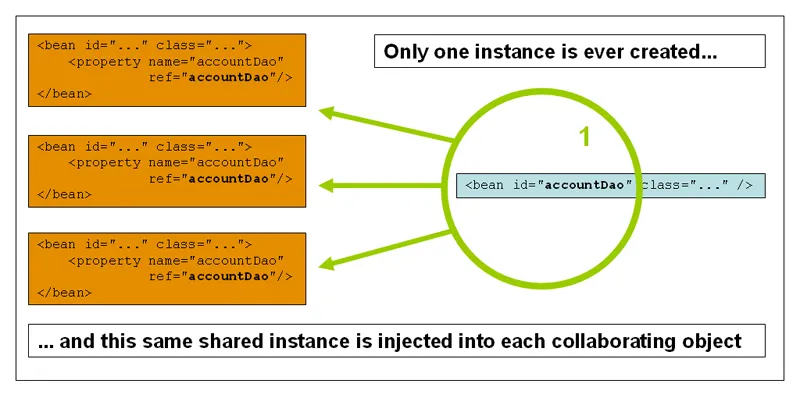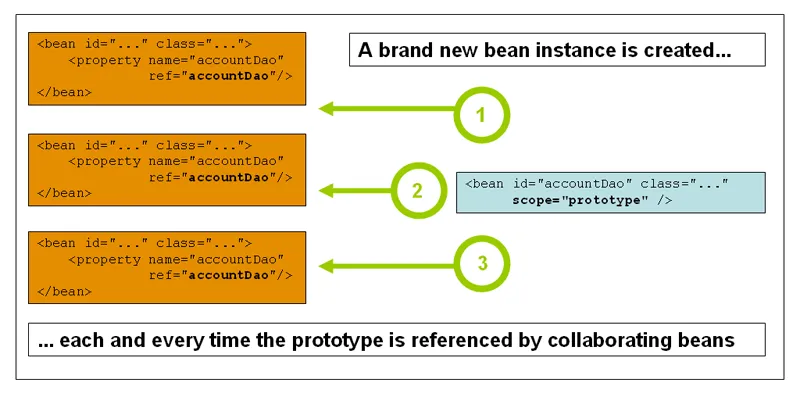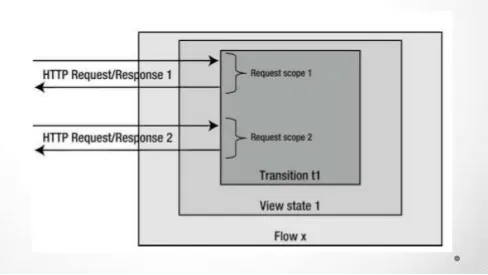有人能解释一下Spring beans中的作用域吗?我一直只用过“prototype”,但是我可以用其他参数代替它吗?
这是我说的一个示例:
<bean id="customerInfoController" class="com.action.Controller" scope="prototype">
<property name="accountDao" ref="accountDao"/>
<property name="utilityDao" ref="utilityDao"/>
<property name="account_usageDao" ref="account_usageDao"/>
</bean>


